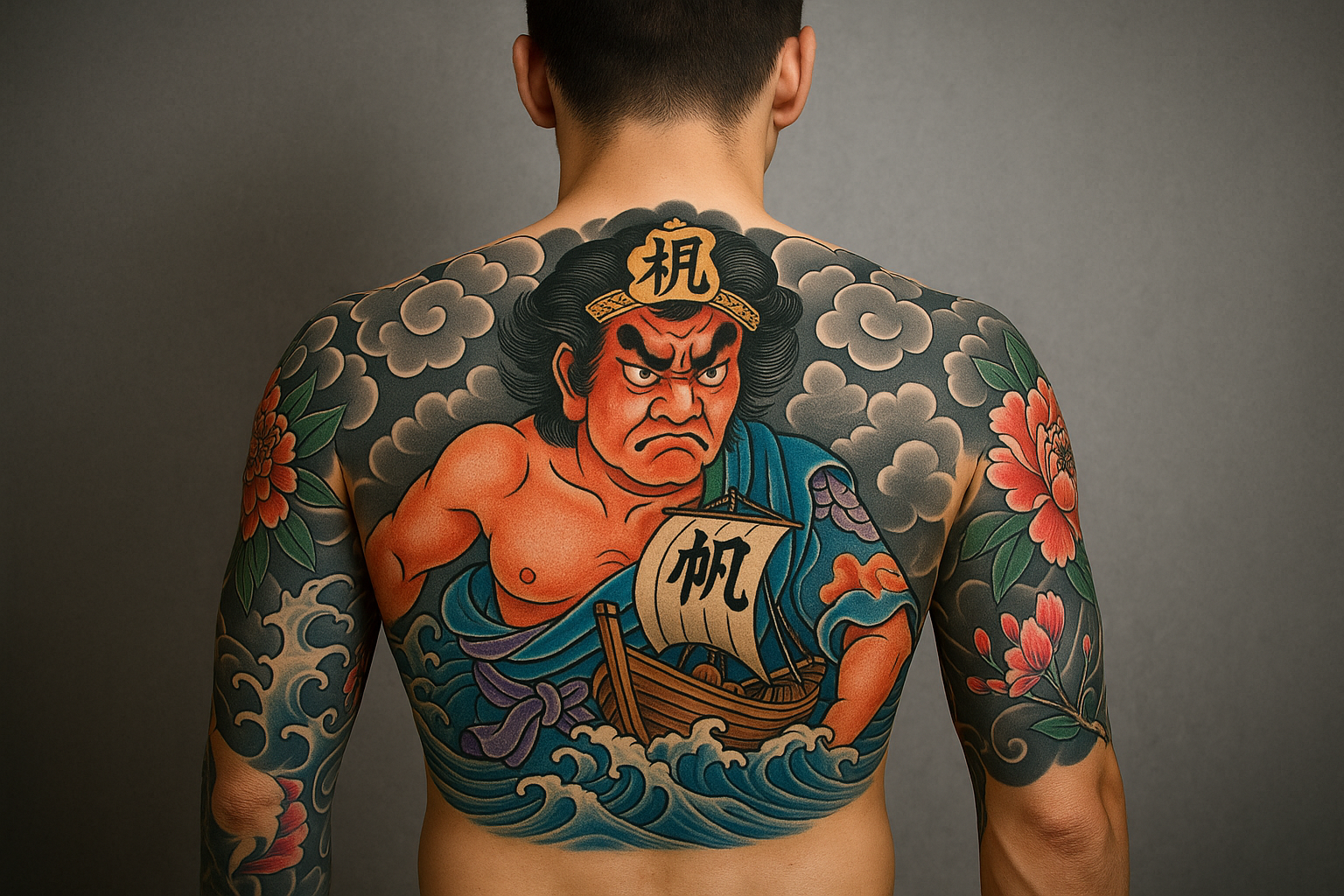In the world of Japanese tattooing, names aren’t just labels — they’re legacies. To be called Horifune (彫舟) is to carry a lineage, a duty, and a philosophy carved into skin, breath, and silence.
You’ve seen the name appear across European conventions and Irezumi culture — on backpieces, on sleeves, on sacred skin. But who is Horifune? What does the name actually mean? And why is it more than just branding?
Let’s go beneath the surface.
🈶 The Meaning of ‘Horifune’ — Broken Down
‘Hori (彫)’ means to carve or engrave, and is used in traditional tattooing names to represent the artist’s role. It reflects the act of sacred inscription — not casual drawing, but chiseling myth into flesh.
‘Fune (舟)’ means boat or vessel.
So Horifune means:
🛶 “The one who carves like a vessel.”
Or more spiritually:
“A tattooist who carries people across.”
It’s not just poetic. It’s deeply symbolic.
🧘 The Spiritual Layer: Tattooing as a Crossing
In Shinto and Buddhist traditions, boats are often metaphors for spiritual journeys — crossing from ignorance to enlightenment, from pain to transformation, from ego to essence.
A Horifune doesn’t just give you ink. He guides you through:
- Physical pain
- Psychological surrender
- Symbolic rebirth
When you sit in the Tebori chair, you’re not just receiving a tattoo. You’re being ferried from one version of yourself to another — one tap at a time.
🧑🎨 The Title ‘Hori-’ Is Not Taken — It’s Given
In traditional Japanese tattooing, you don’t get to just call yourself Horifune.
The prefix ‘Hori’ is earned, passed down from master to apprentice after years of:
- Scrubbing floors
- Preparing needles (Hari)
- Studying art and symbolism
- Practicing on oneself
The name is a title of trust — a sign that you uphold the flow, philosophy, and sacred geometry of Wabori tattooing.
So when an artist uses the name Horifune, it signifies:
✅ They’ve studied under a master
✅ They’ve been recognized by a tattoo lineage
✅ They don’t tattoo for style — they tattoo for story and spirit
📜 Horifune’s Legacy: Wabori in Europe, Rooted in Japan
Today, Horifune Irezumi bridges East and West — bringing Japanese tattooing to clients across Germany, France, and beyond. But his work remains faithful to:
- Traditional motifs (dragon, koi, Hannya, deities)
- Body flow and background harmony
- Silence, patience, and ritual
His tattoos aren’t trendy. They’re timeless.
He honors the Japanese principles of:
- Gaman (endurance)
- Ma (space and timing)
- Kiryoku (spirit in stroke)
Every tattoo from Horifune is part of a larger visual sentence — written not in letters, but in waves, flames, clouds, and scars.
🧠 What Sets Horifune Apart From Western ‘Japanese-Style’ Artists?
Anyone can copy a koi off the internet. But not everyone can build a full sleeve that flows from shoulder to wrist like a dragon in mid-flight.
Here’s what Horifune’s name guarantees:
| Western “Style” | Horifune Method |
|---|---|
| Sticker tattoos with no background | Motifs layered into flowing backdrops |
| Ignorance of meaning | Full symbolic literacy |
| Tattoo for aesthetics | Tattoo for transformation |
| Machine only | Often hand-poked with Tebori |
| Fast-paced and loud | Slow, silent, intentional |
🔥 Why His Name Matters More Now Than Ever
In an age of Instagram tattooing and aesthetic appropriation, a name like Horifune is a reminder:
That this art has depth.
That it carries pain and power.
That each needle tap echoes a story older than hashtags.
The name is a vow. And when you wear Horifune’s work, you carry that vow with you — on your skin, in your breath, and through every room you enter.
🖤 Want to Wear the Meaning, Even Without the Ink?
Not everyone is ready for a 60-hour Tebori sleeve. But you can still wear the spirit of Japanese tattooing.
👉 Explore our Wabori-Inspired Shirt Collection
Bold. Sacred. Sensual. Made for women who don’t flinch from their own evolution.
📷 Image Insert Suggestions:
- [Image 1]: Kanji 彫舟 in traditional brushstroke style with translation underneath
- [Image 2]: Horifune at work with Tebori tool — quiet, focused, mid-process
- [Image 3]: Sleeve in progress showing wave and dragon flow
- [Image 4]: Symbolic drawing of a spiritual boat crossing water — metaphor for transformation


Leave a comment
Your email address will not be published. Required fields are marked *
You must be logged in to post a comment.